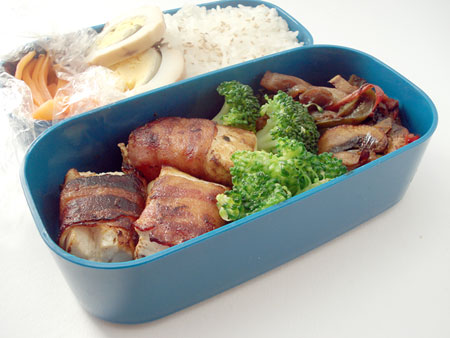
(click on image for a bigger view)
Bento contents:
Total calories (approx): 495 (how calories are calculated)
Time needed: 15 minutes in the morning, 20+ minutes make-ahead
Type: Japanese, mostly make-ahead
This bento uses a lot of staples and make-ahead items. This is really the key to assembling a varied bento lunch box without having to wake up an hour early in the morning to do so! The only thing that is made from scratch in the morning is the bacon wrapped tofu, and even that can be made the night before if needed (though it's best if you make it in the morning.) Johbisai or staples are really great: I got six total bentos out of one batch of the pepper and onion confit, and I'll get at least 2 or 4 bentos out of the 3 remaining tea eggs.
The star of the bento though is the bacon wrapped tofu. It's delicious hot or cold. For a bento, the salty-sweet variation is particularly good. Be sure to use an extra-firm tofu.